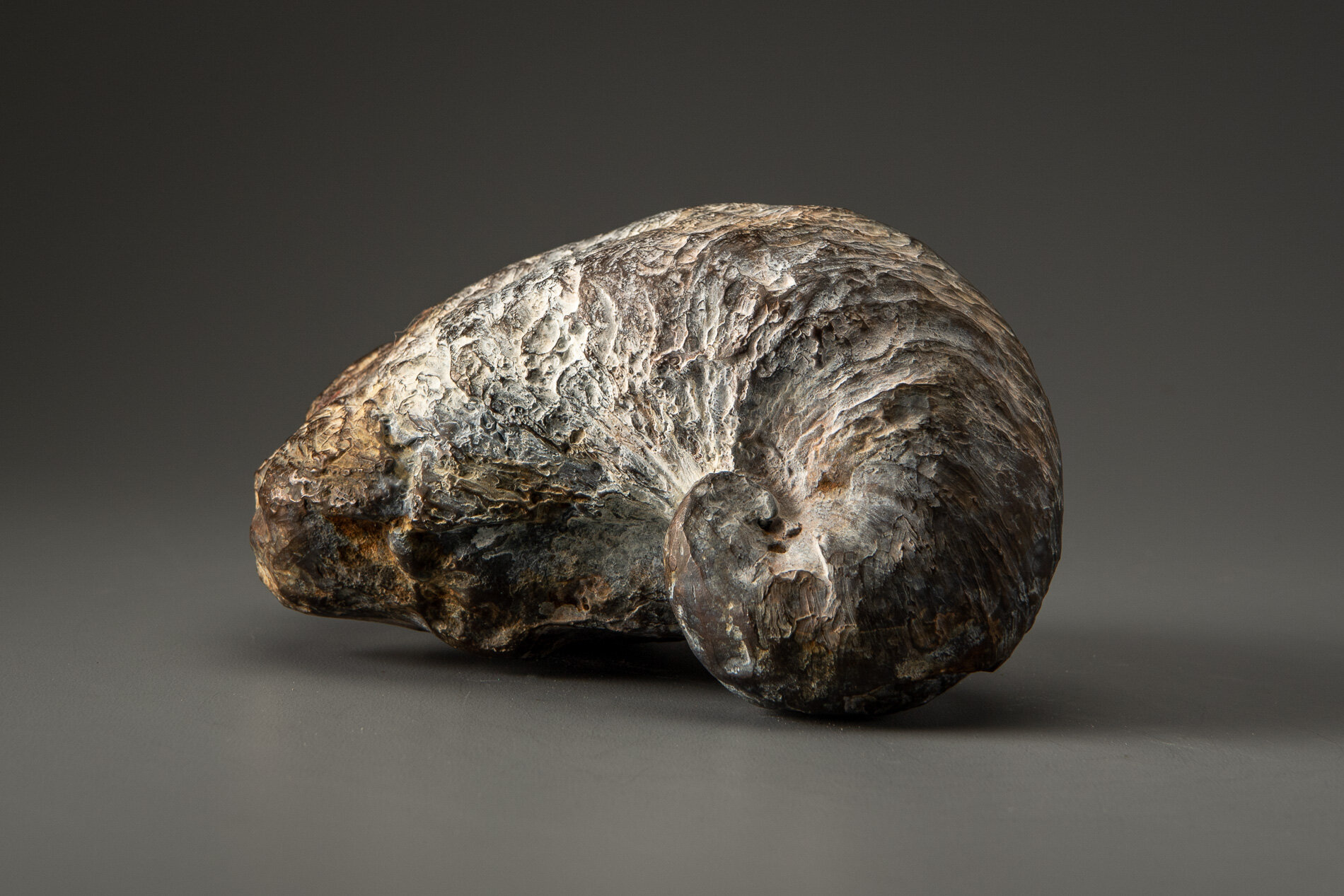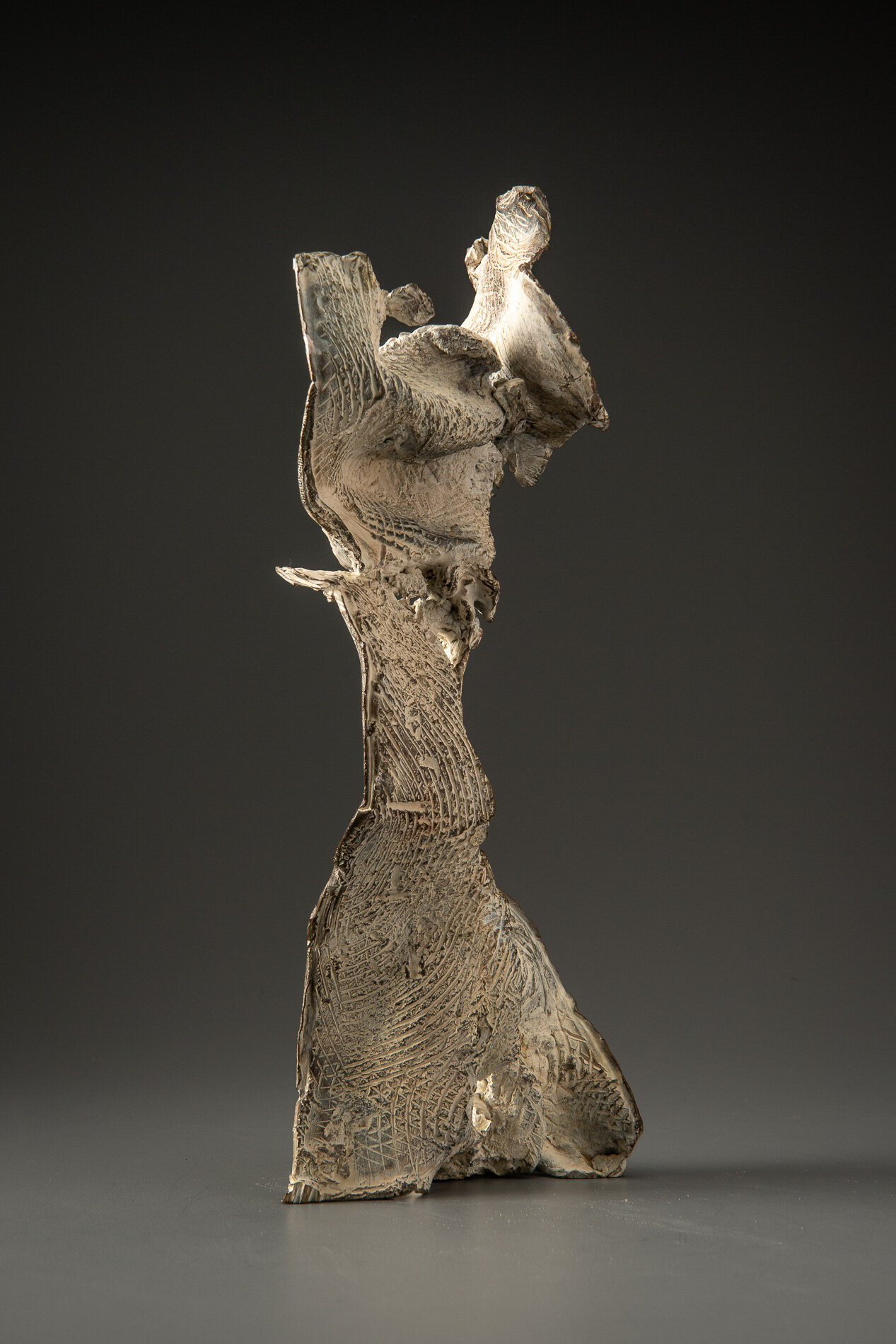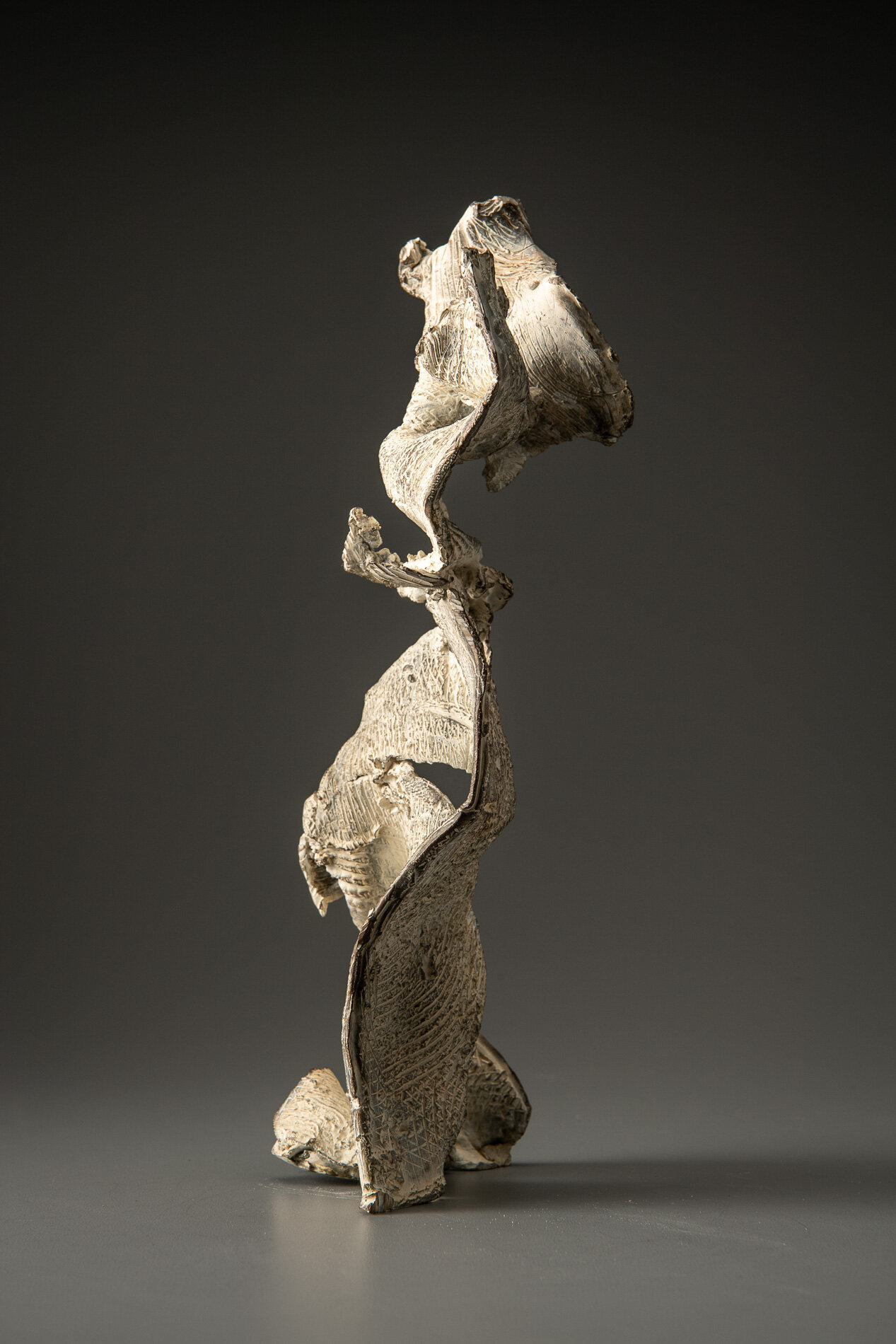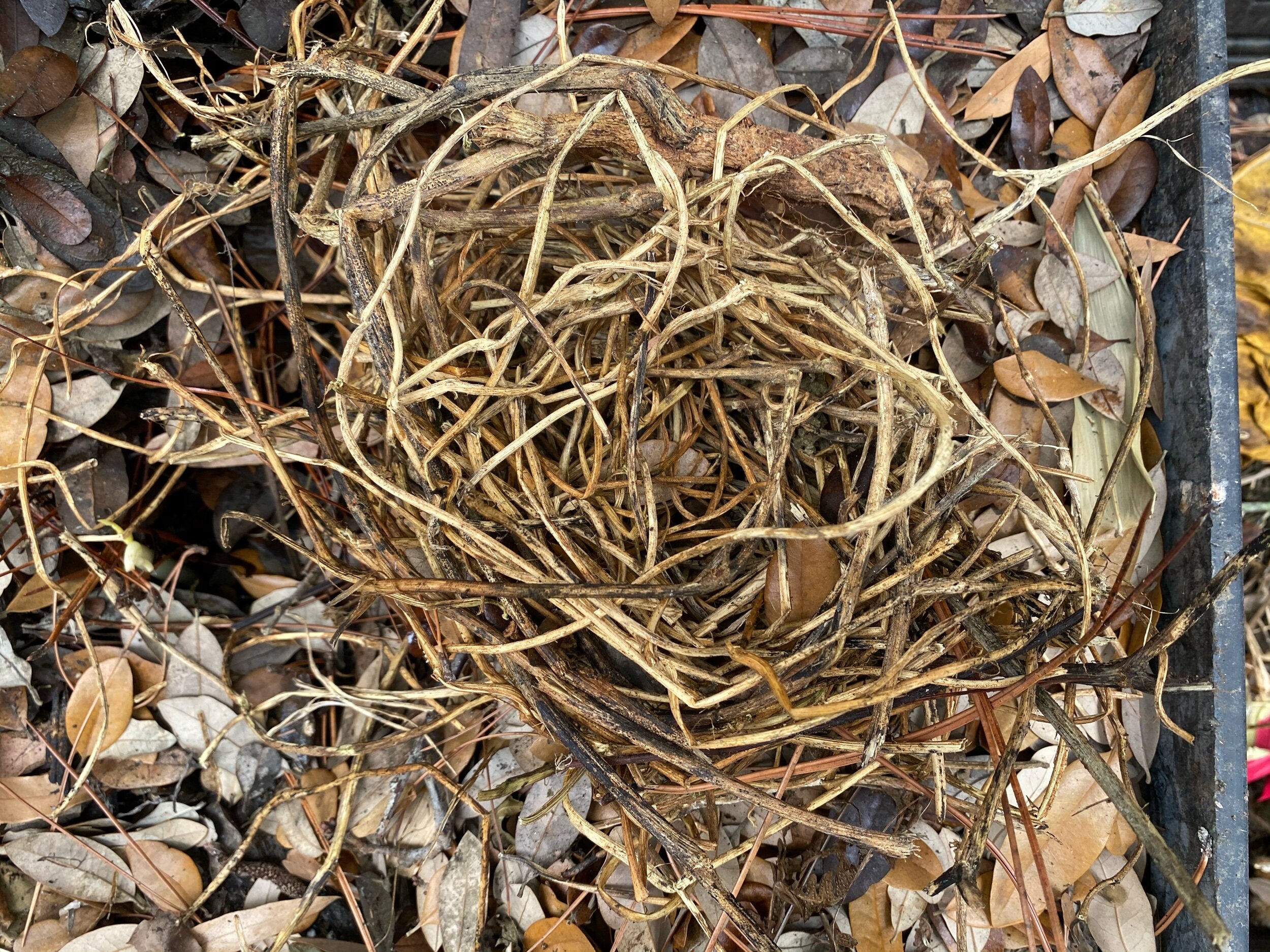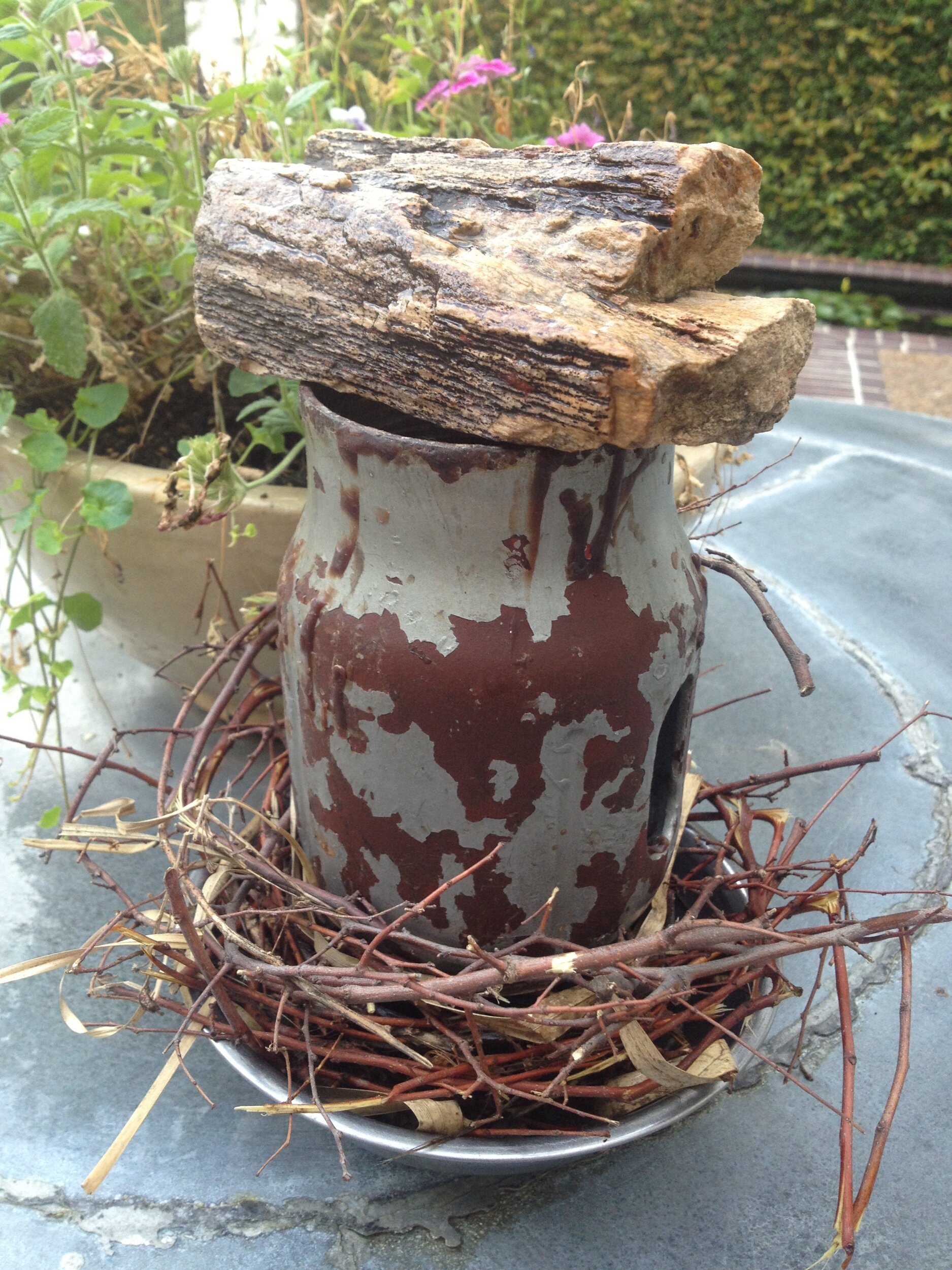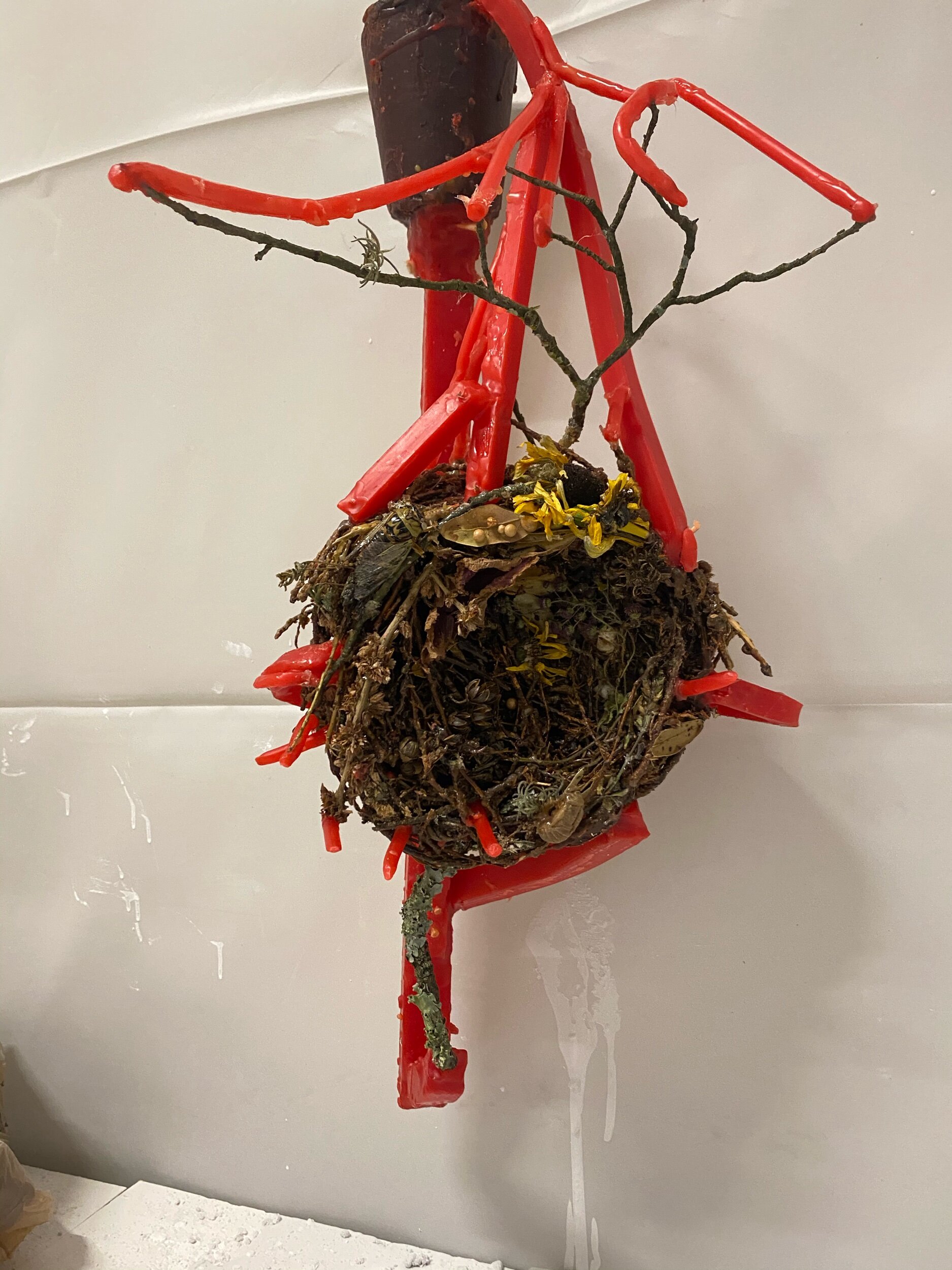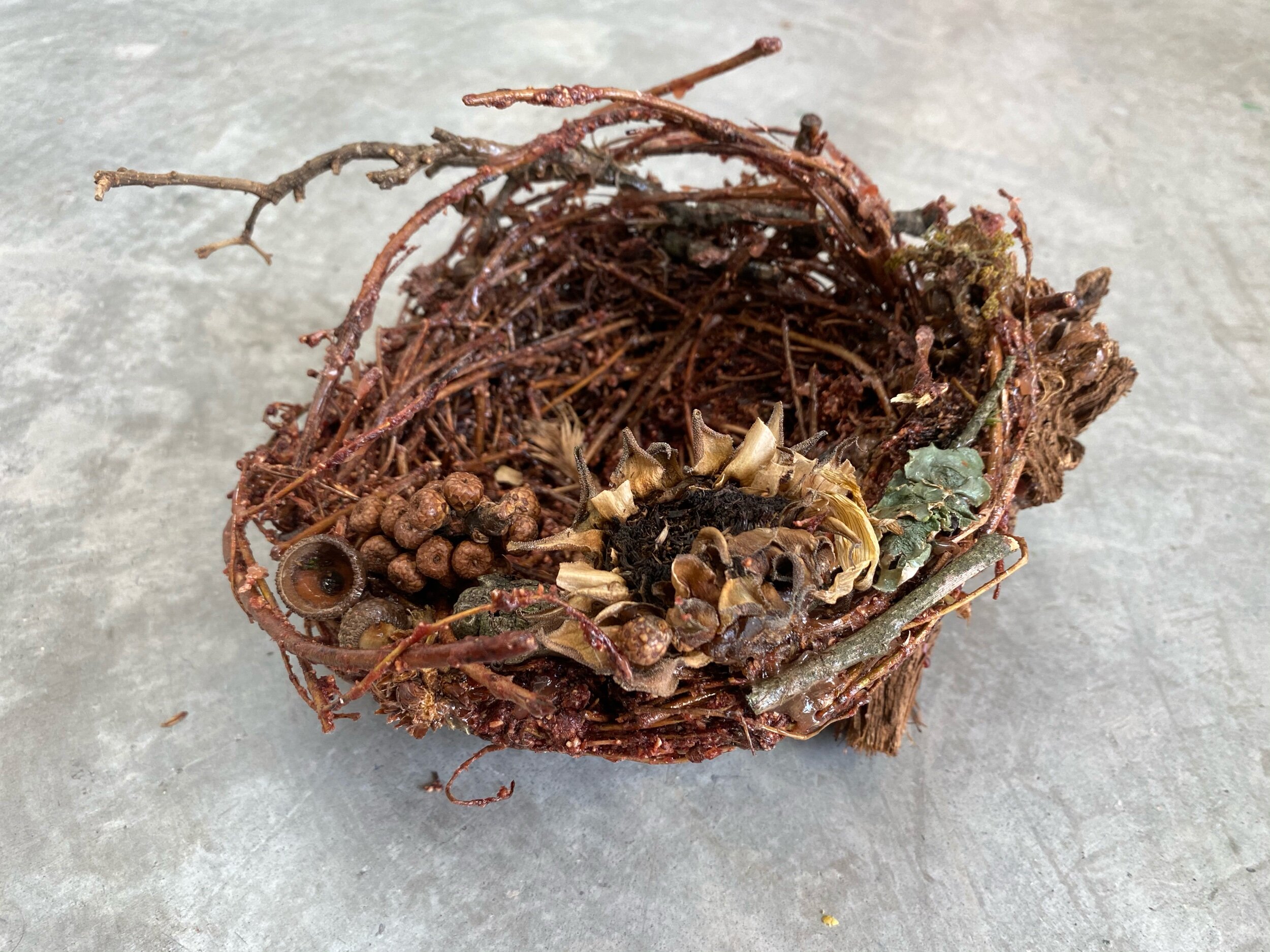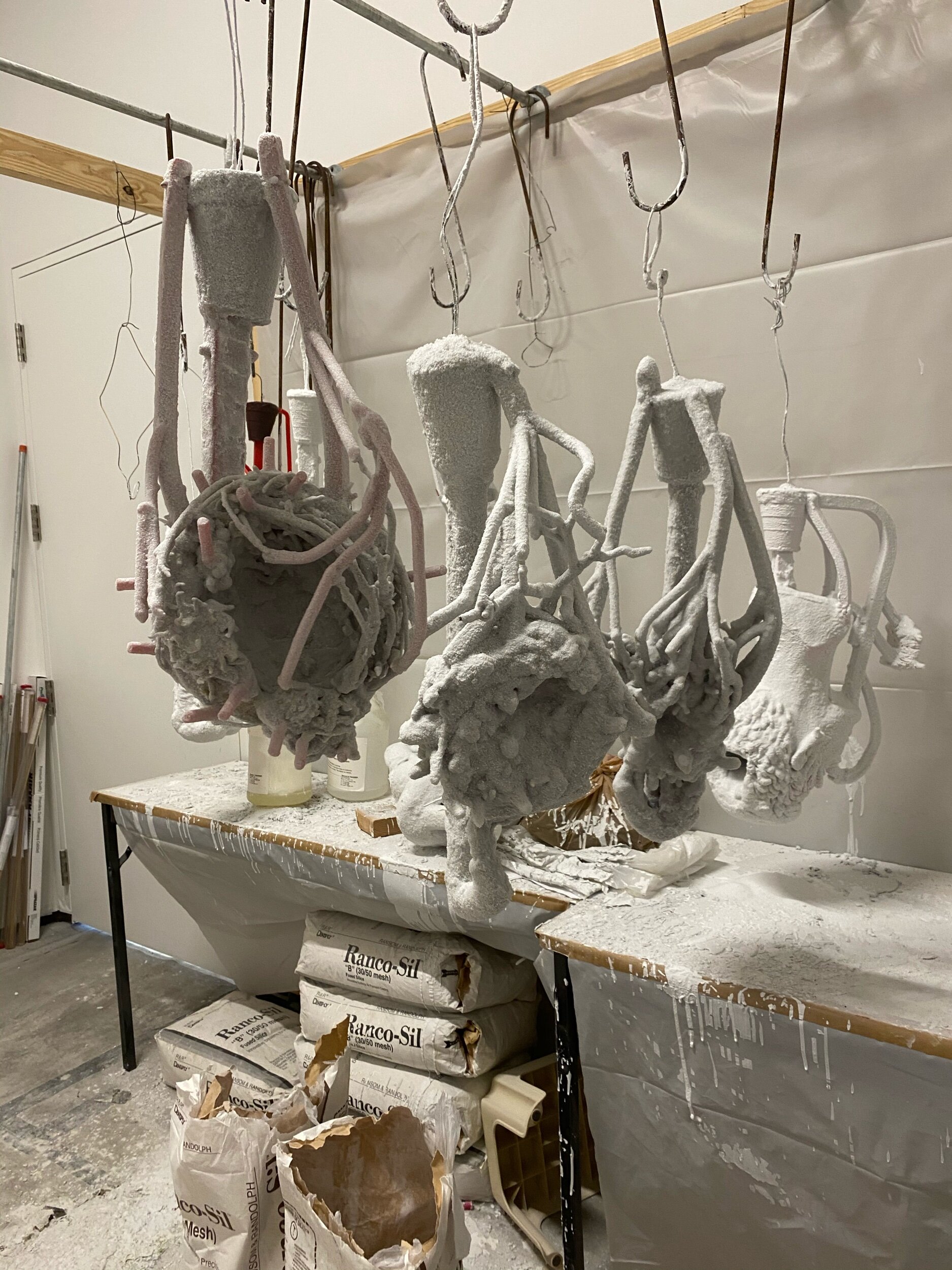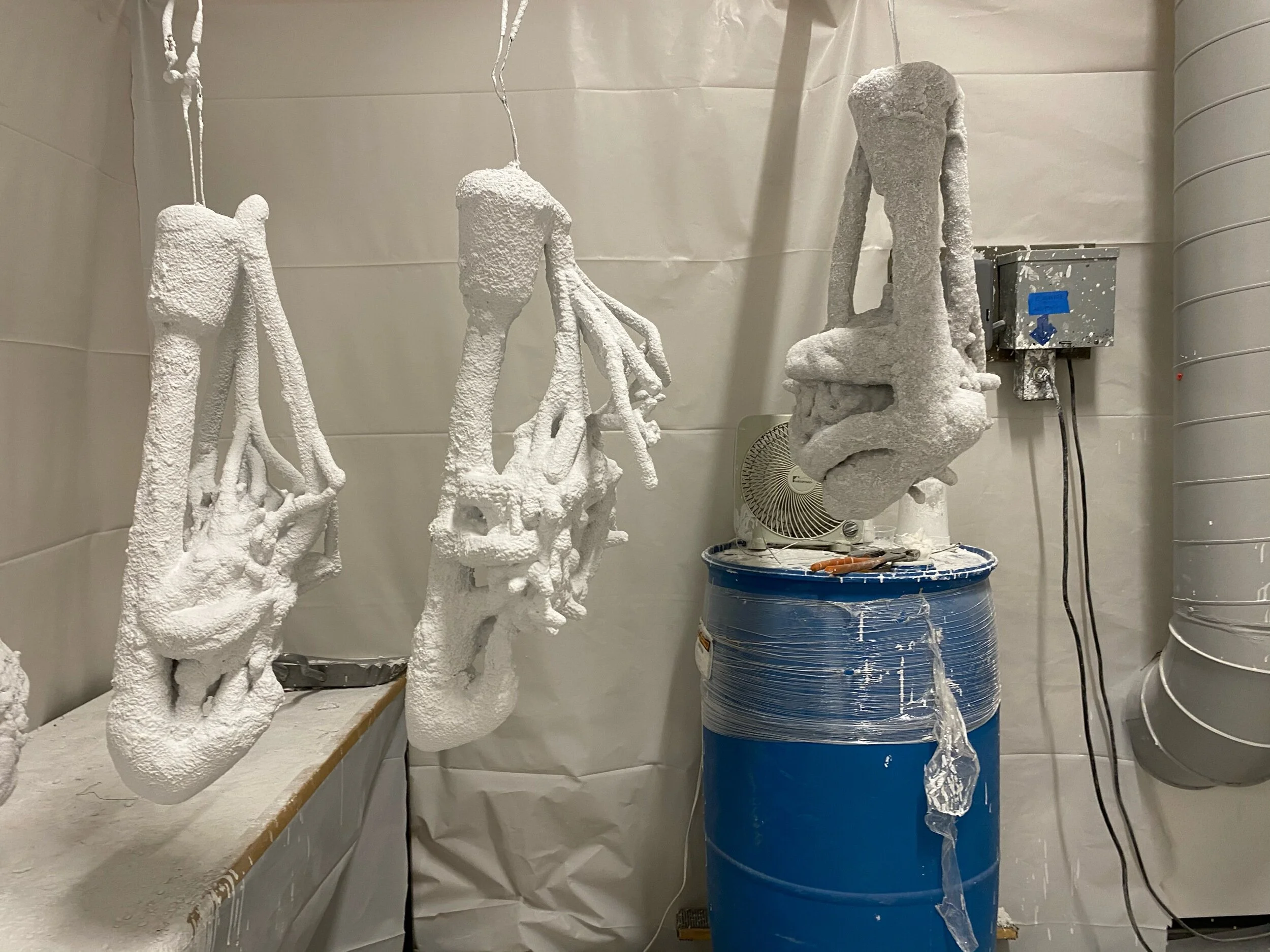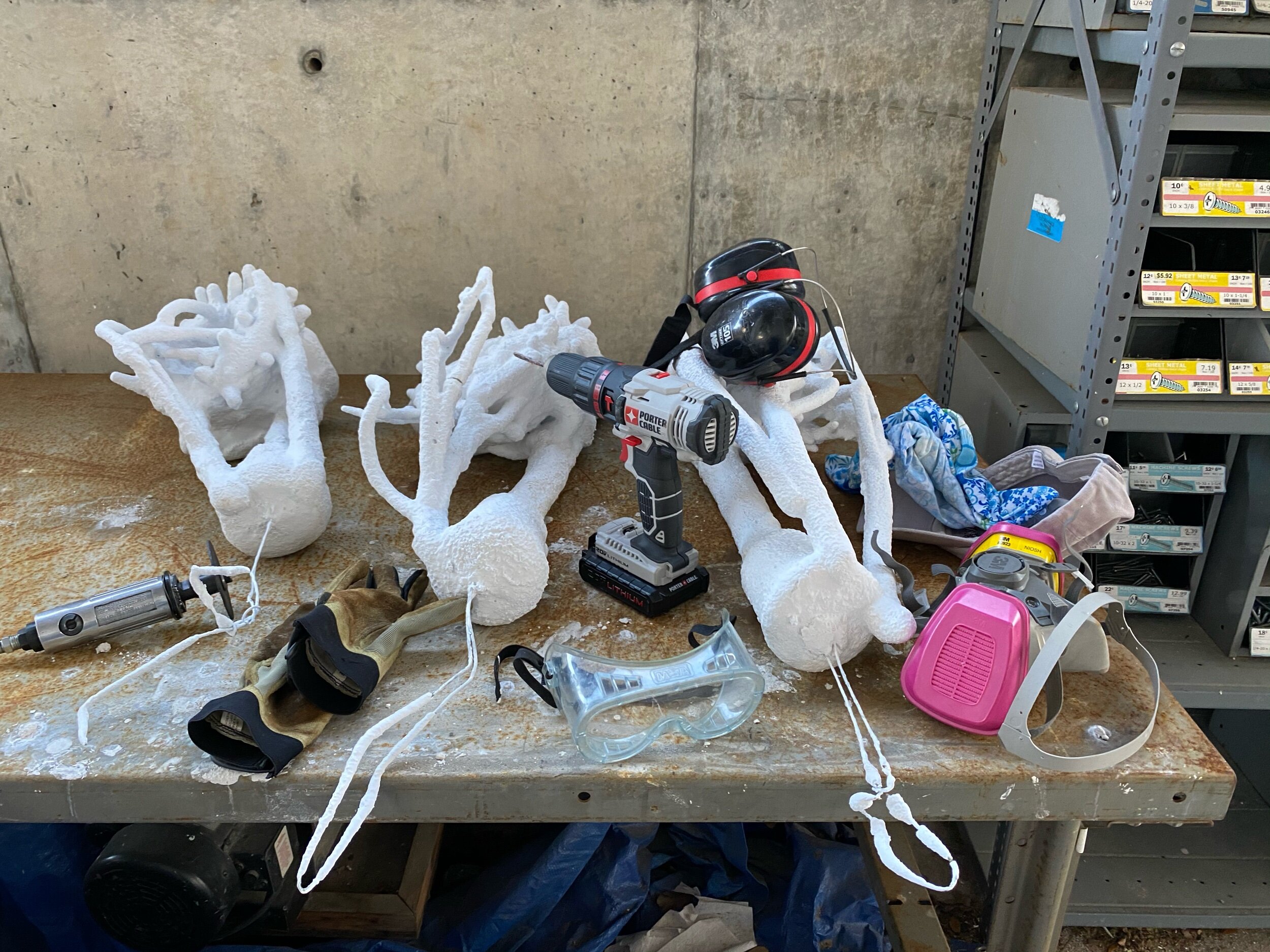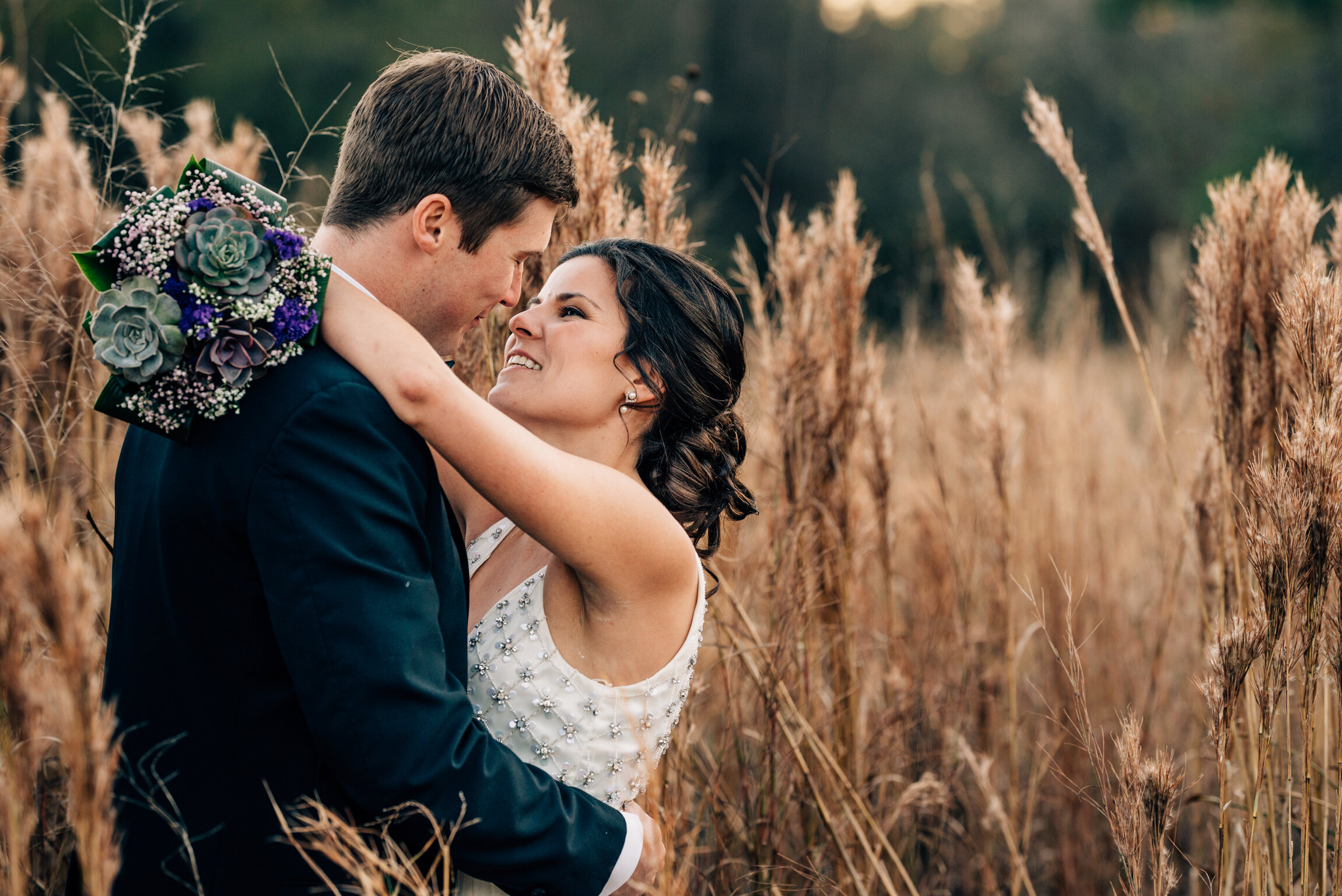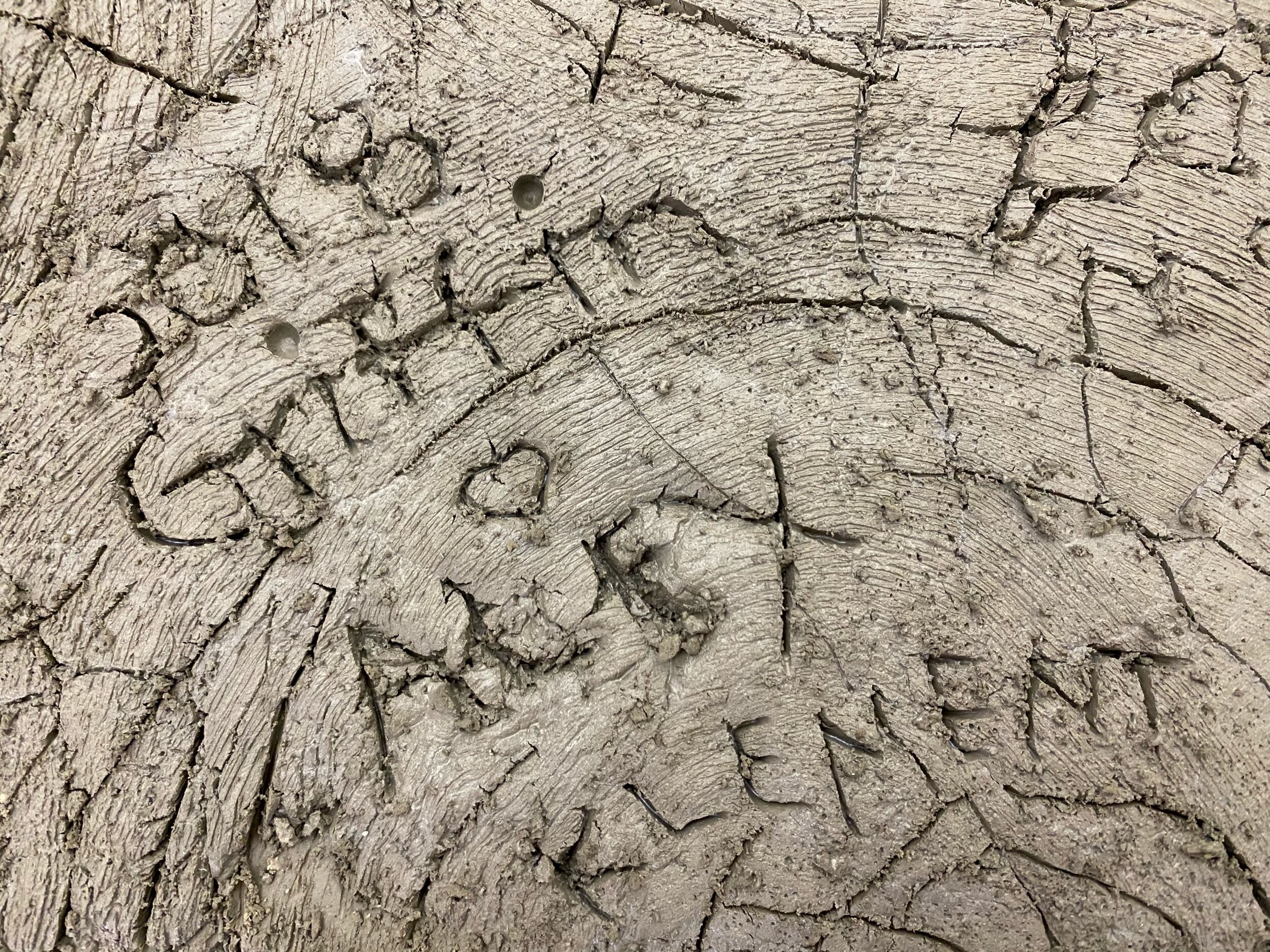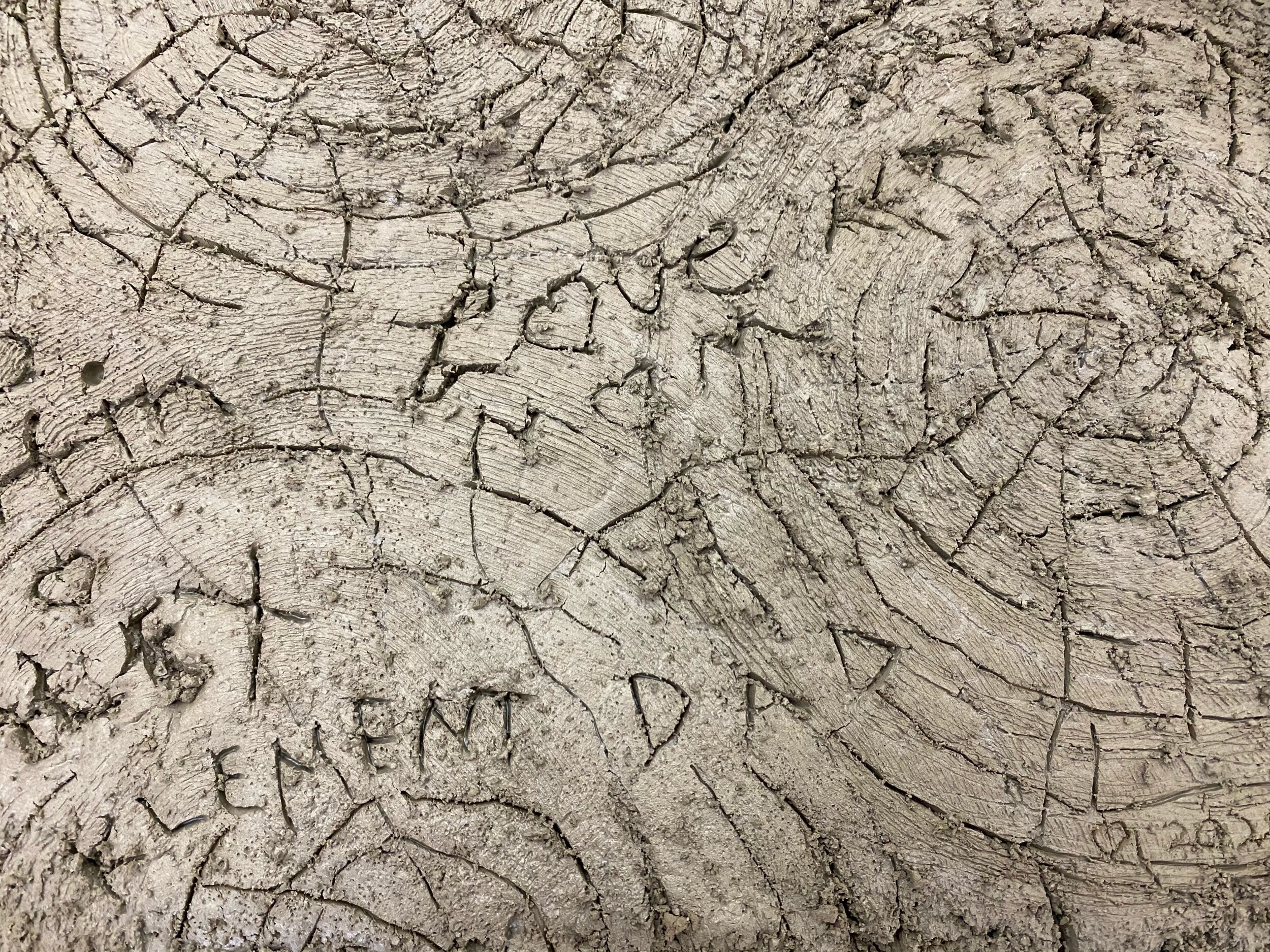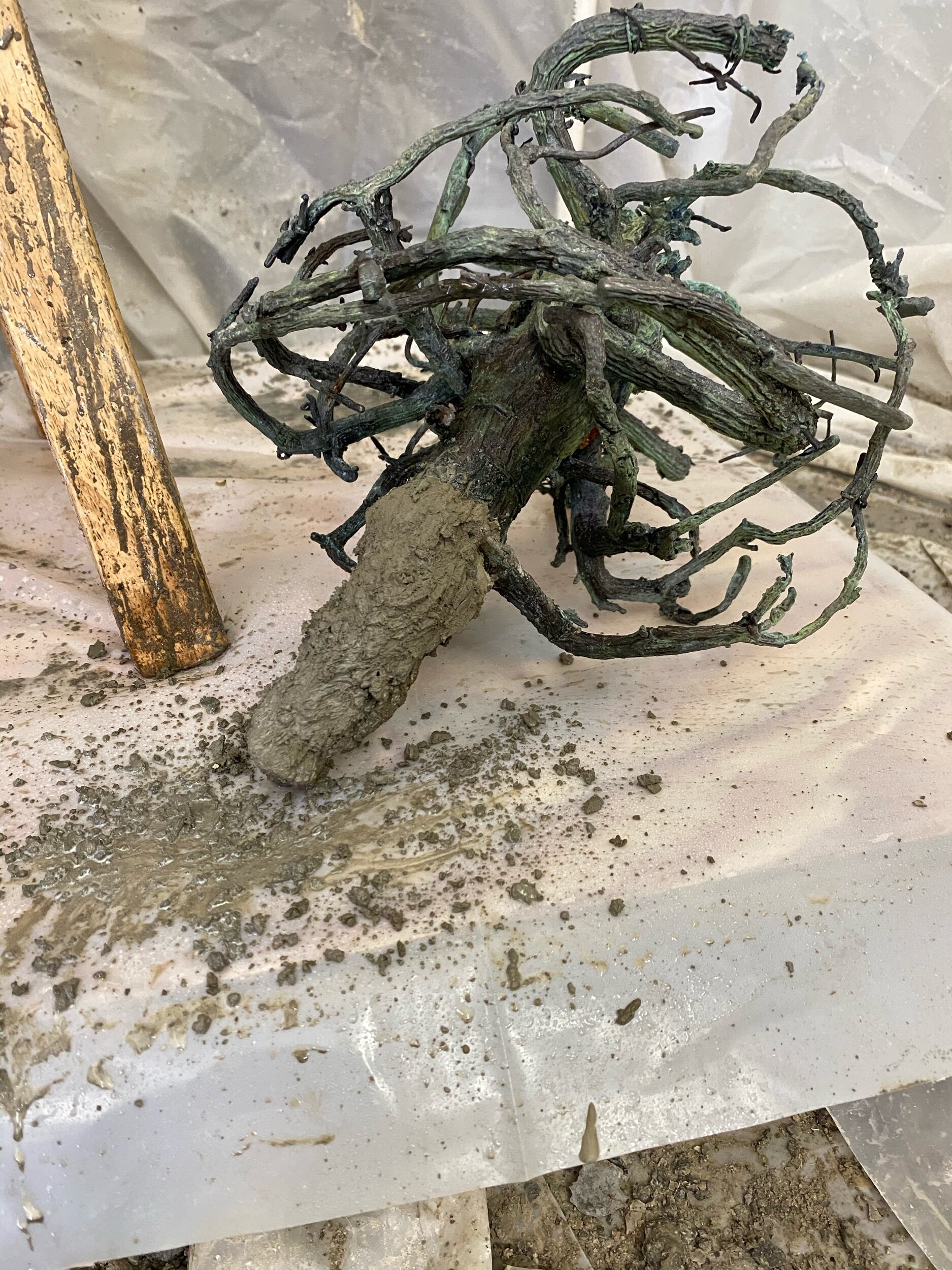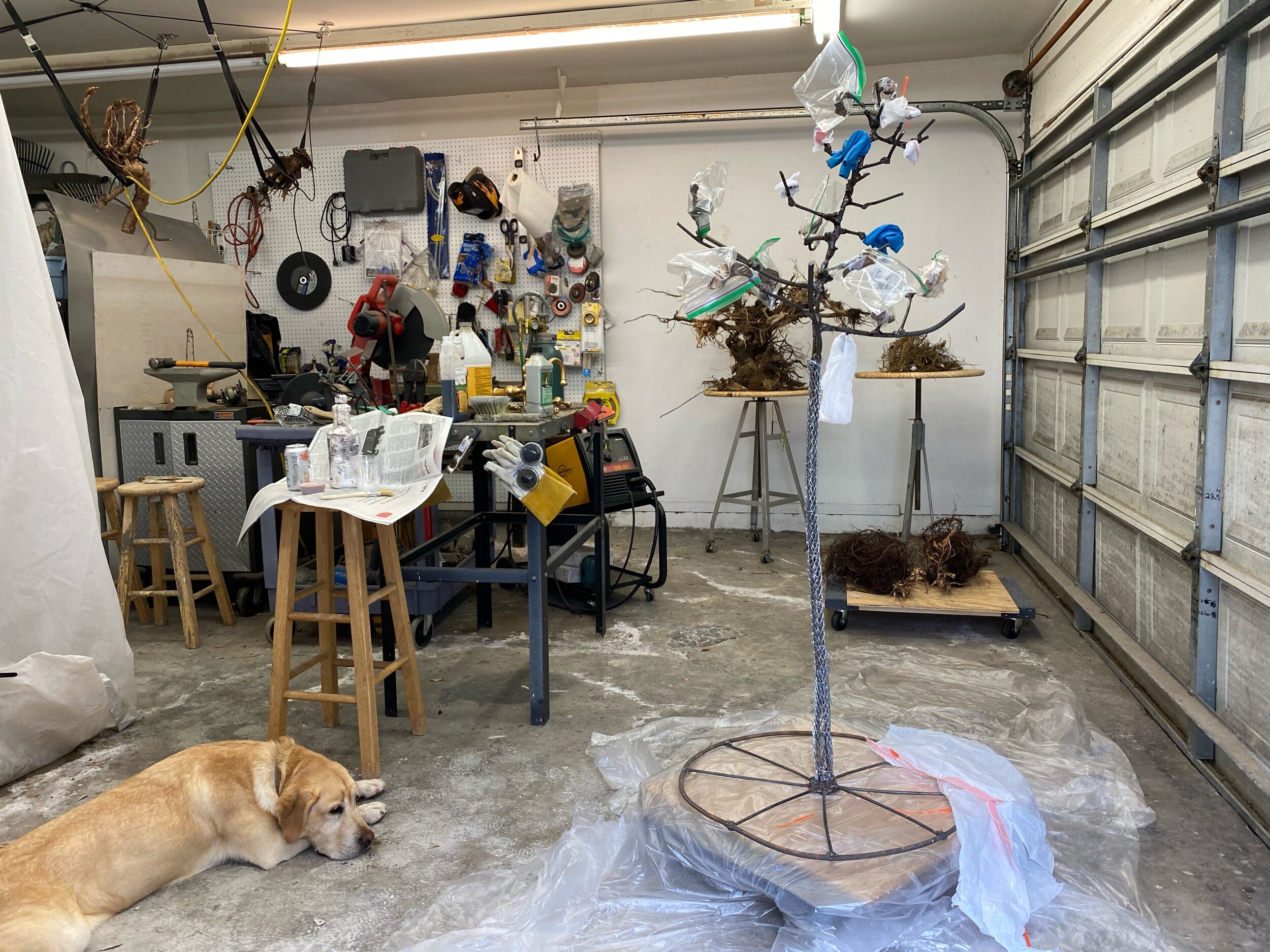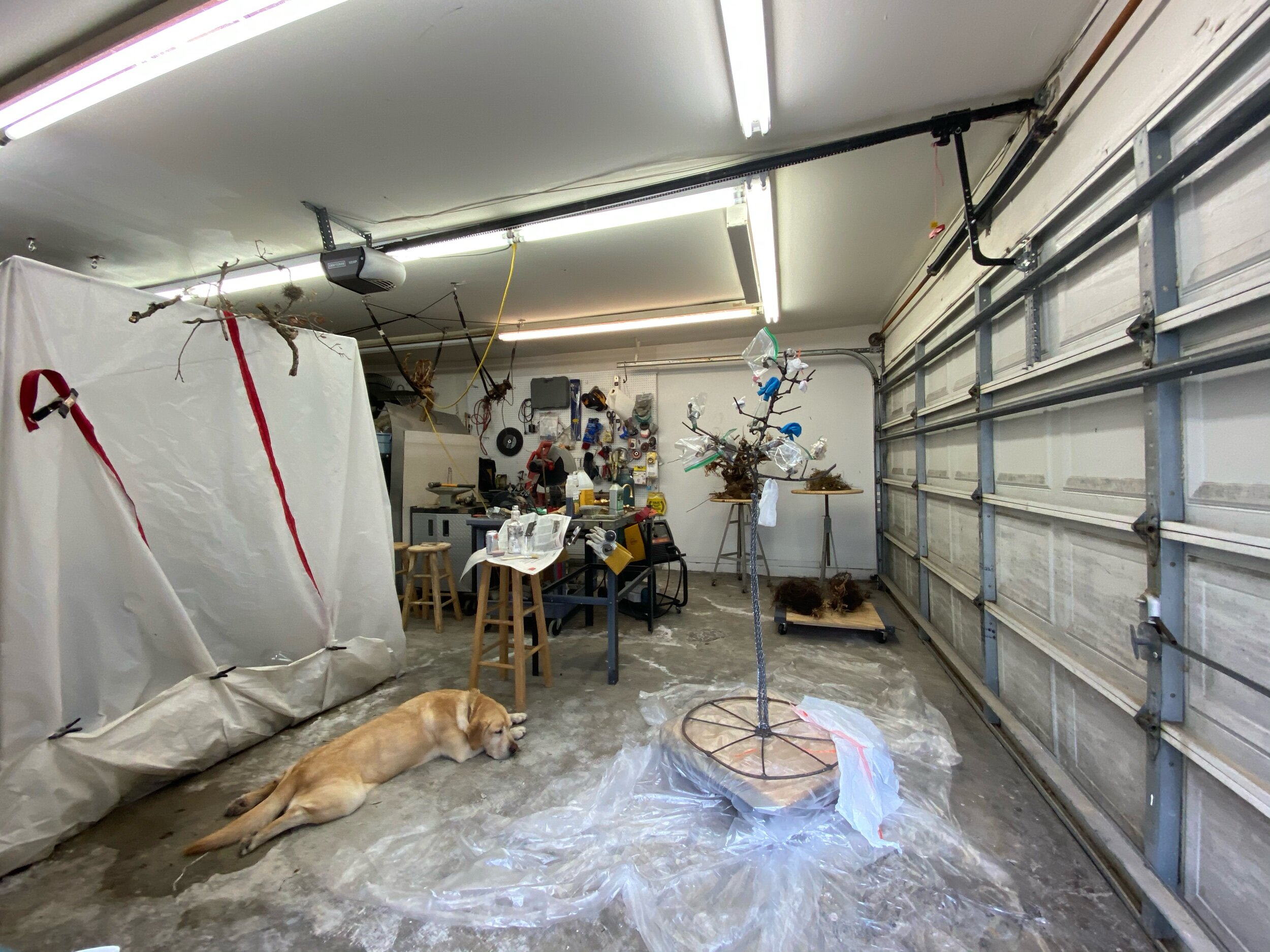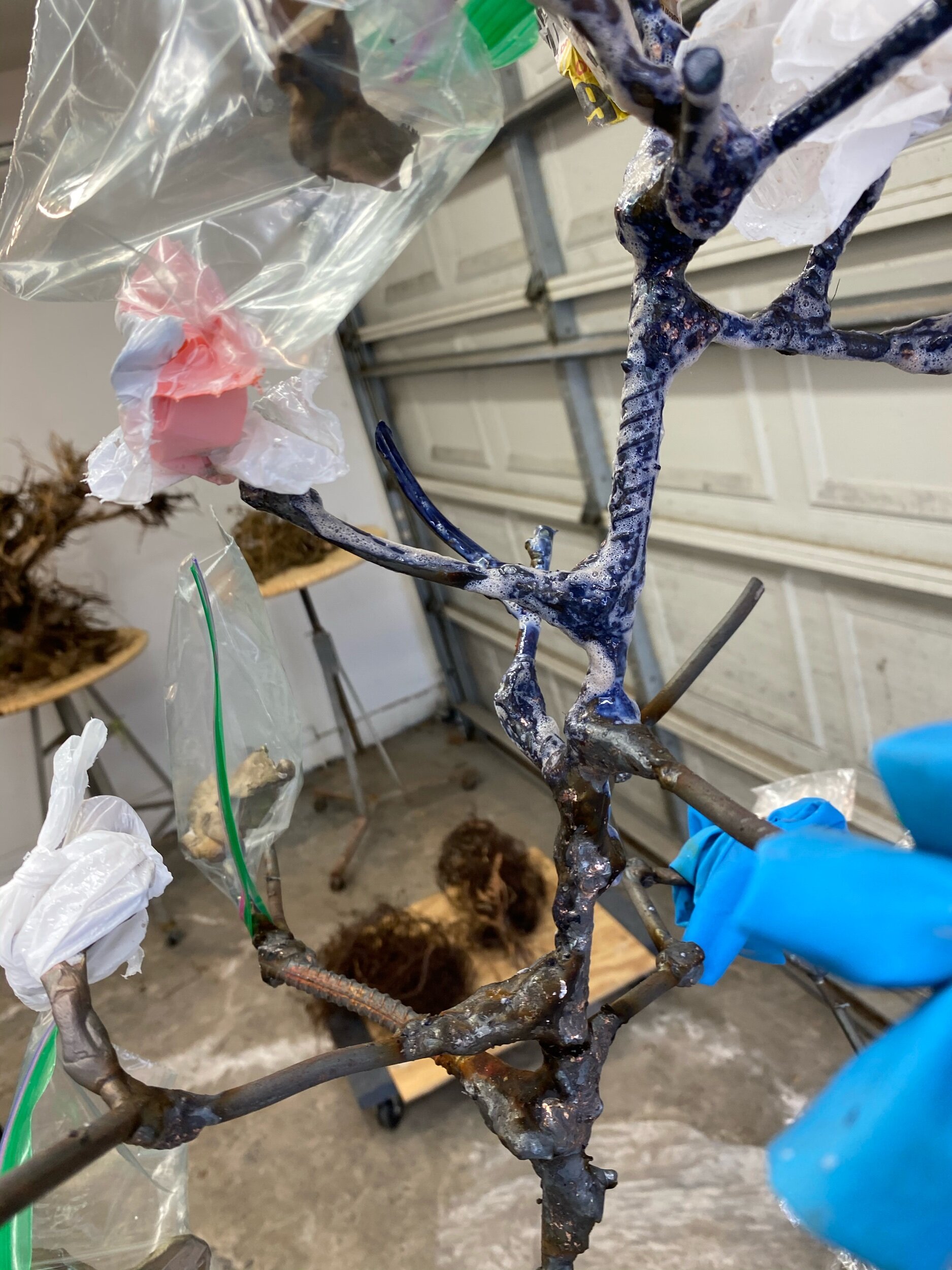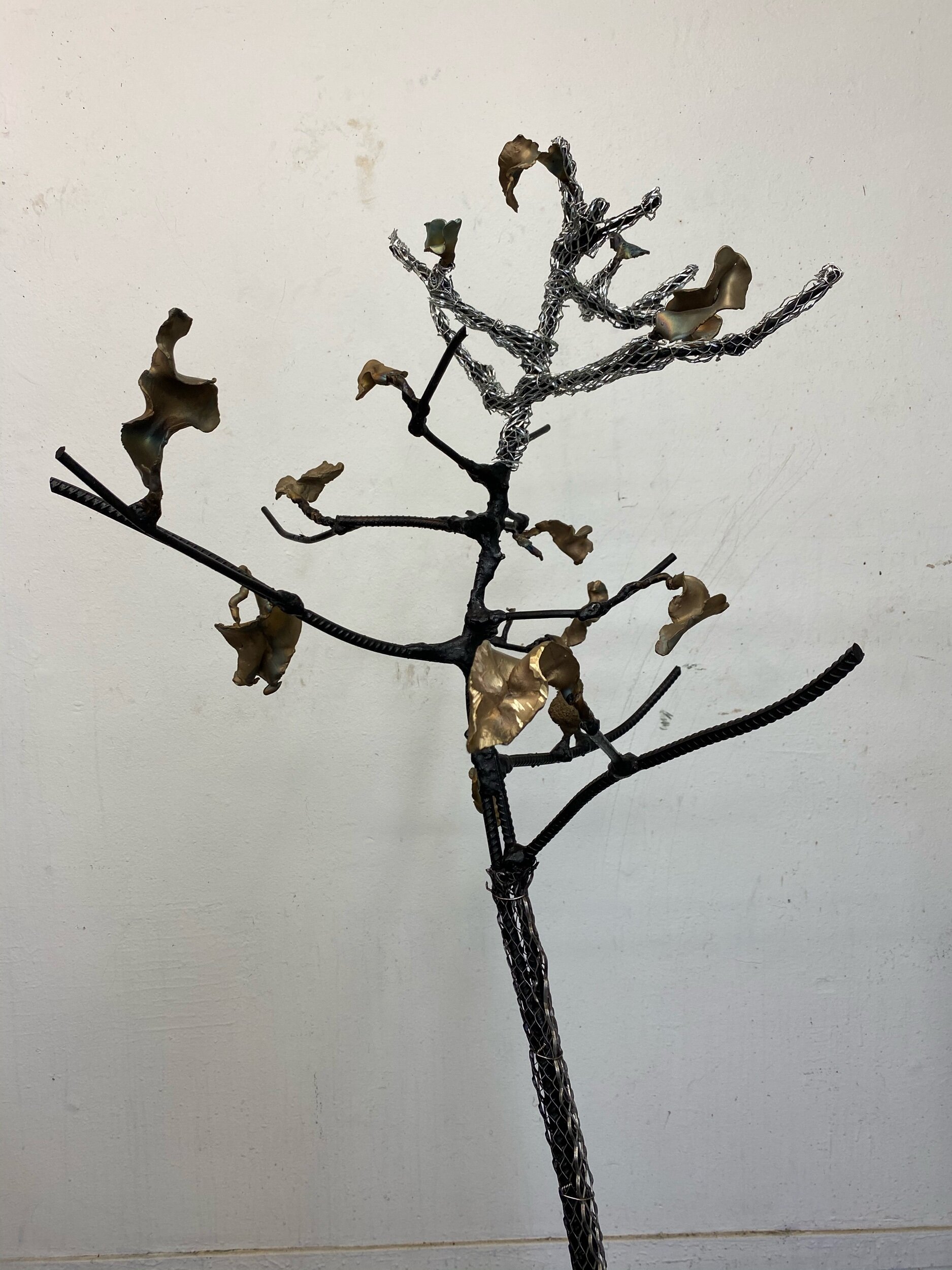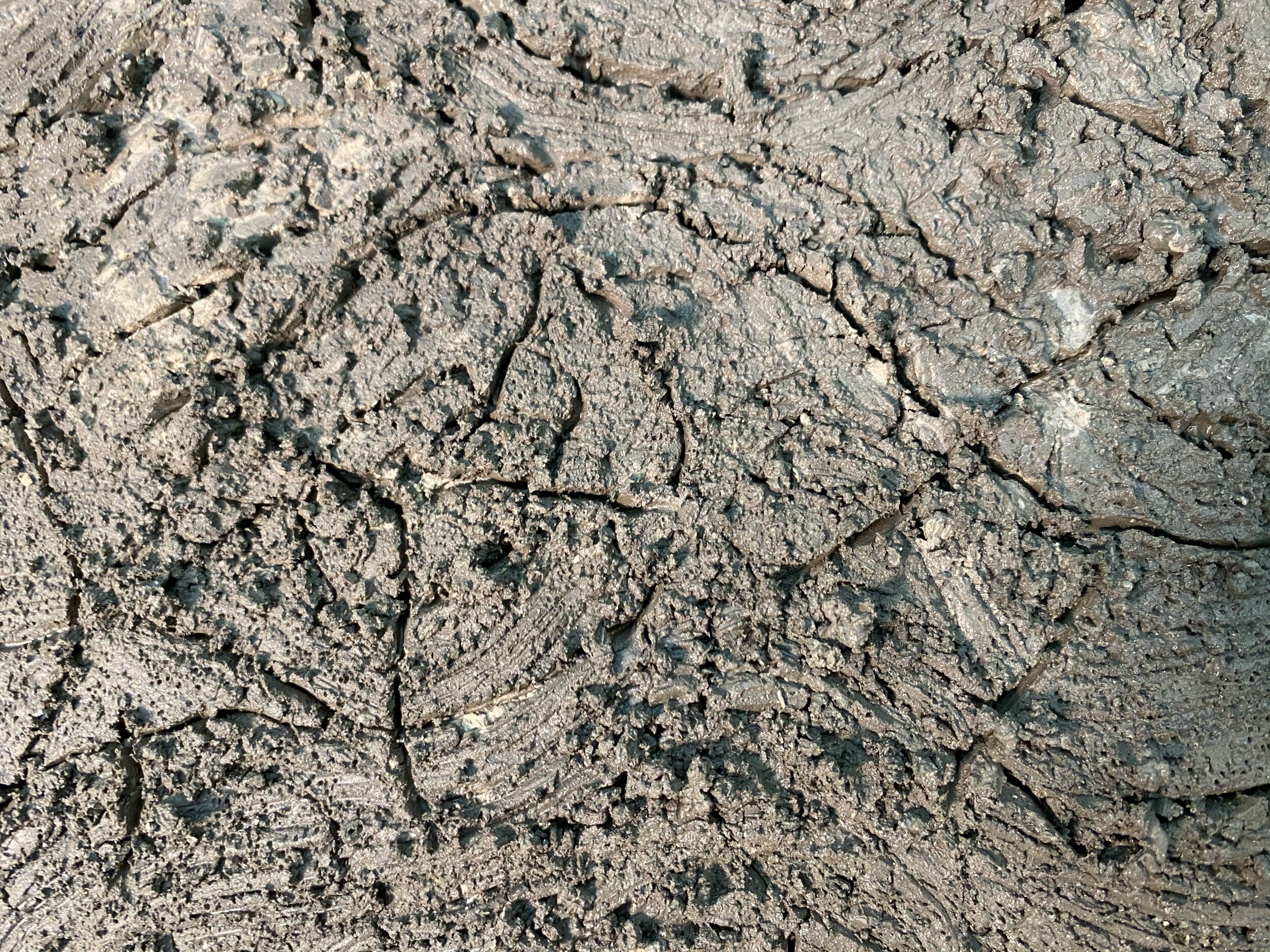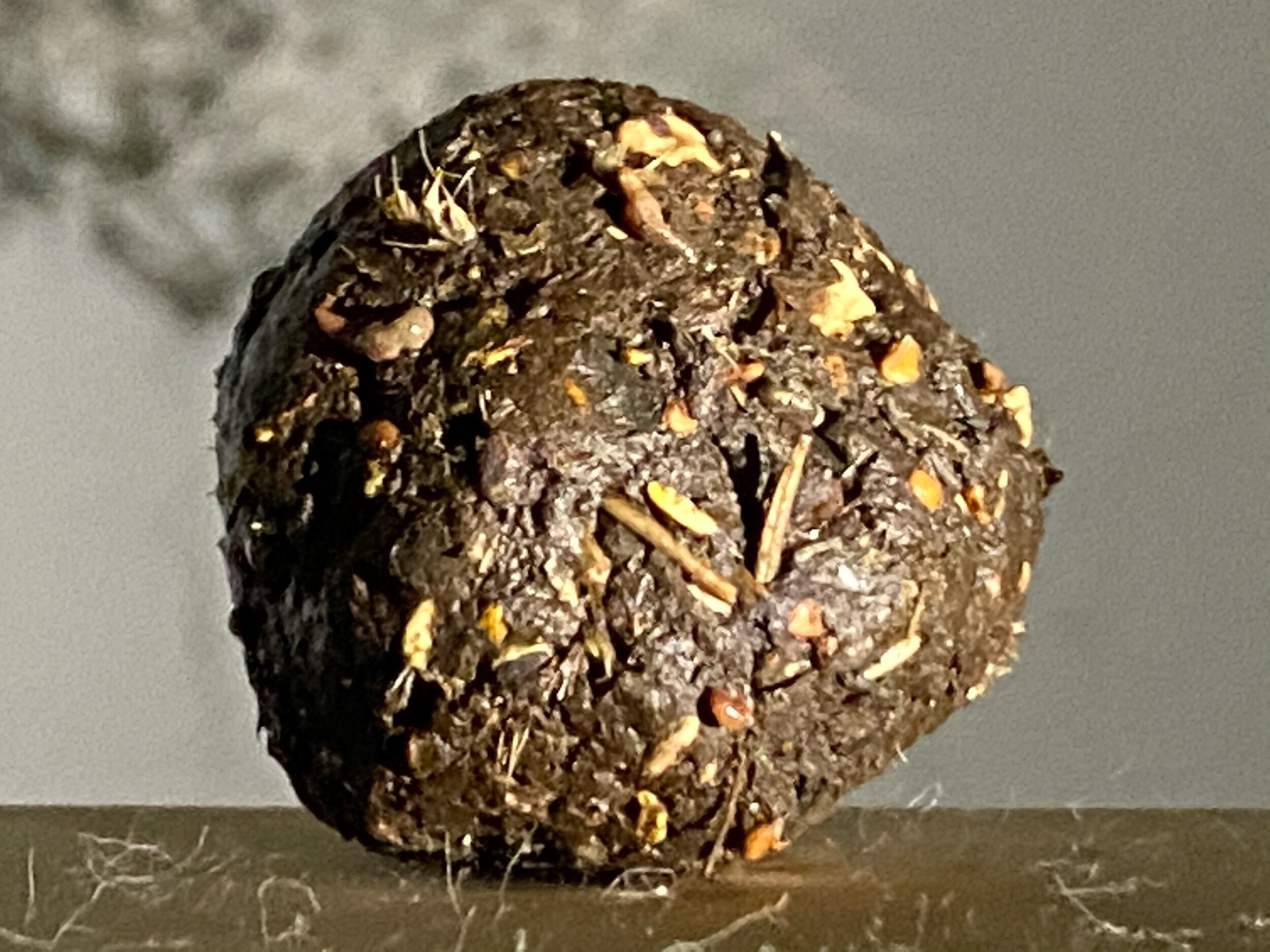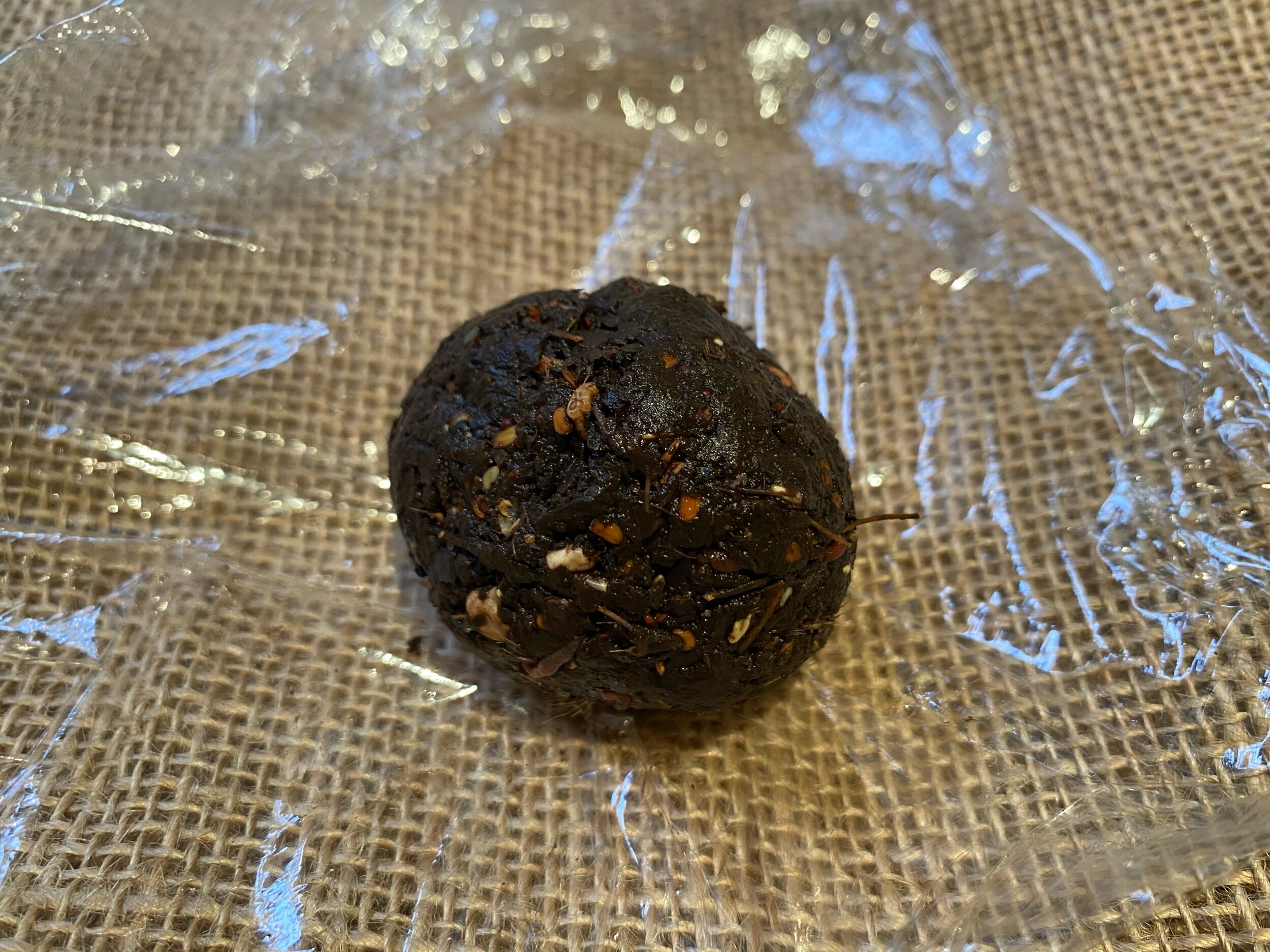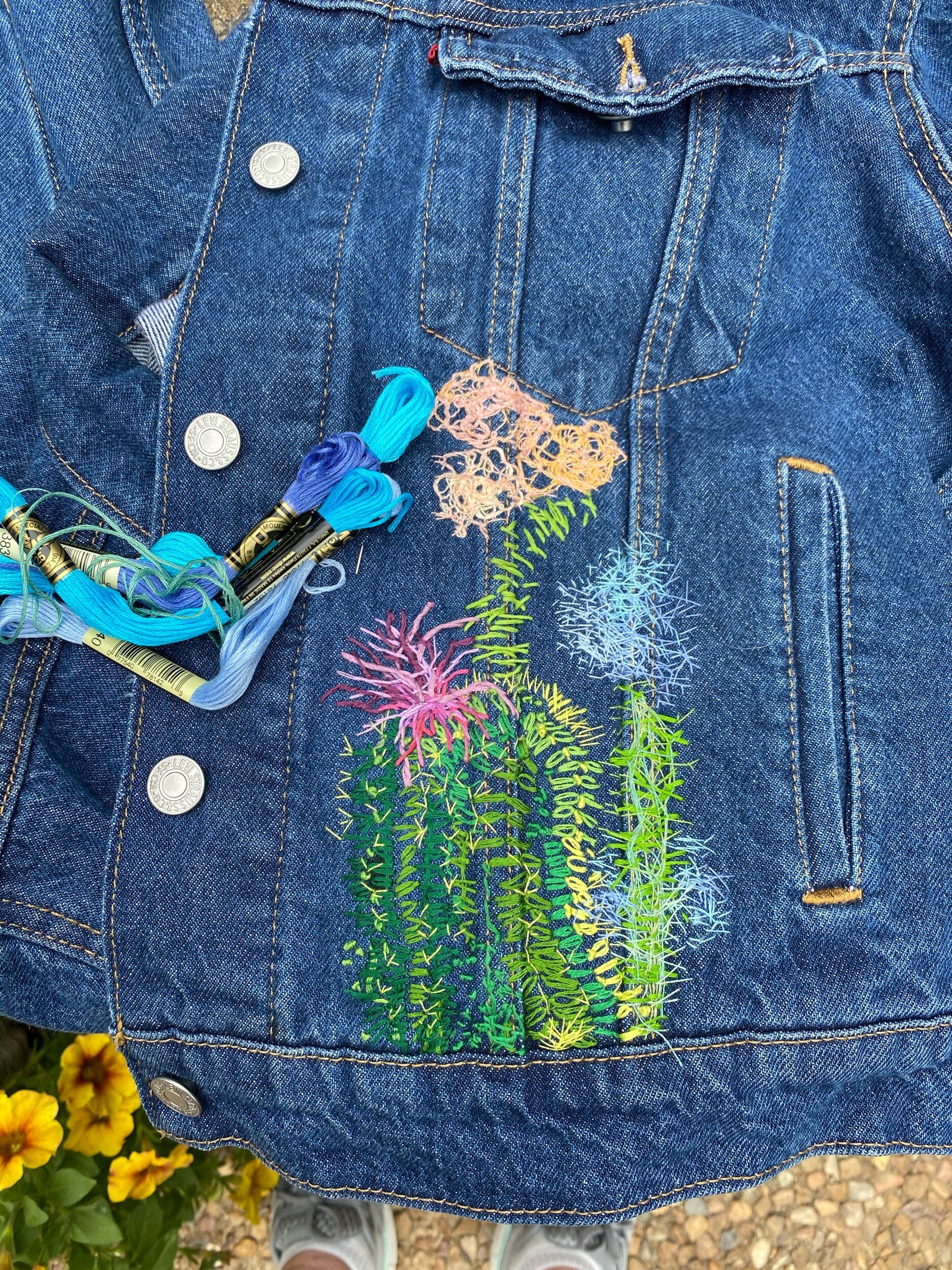Interdependence
60” X 10.25” X 10.25”
Image by Jake Eshelman
Texas Bricks, Paint, Plastic Dome and Base, Vintage Globe Bank, Prop $100 bills, Coins from a diversity of economies, Paper Wasp’s nest on Maple tree leaves, Seashell with barnacles, Red swamp crayfish, bird nest, feather of a Pileated Woodpecker, Blue jay feathers, Mantis, Cicada, Great Purple Hairstreak, Tropical Checkered Skipper, White Peacock, Red-spotted Admiral, Monarch, Red lacewing butterfly, June Beetle, Eastern Carpenter bee, Wolf Spider, Beebalm, Sacred Datura, Bundleflower and various dried leaves.
Artist Statement
Interdependence is built from a collection of TEXAS-stamped bricks washed with a white patina. In a staggered stacked square skyscraper form, the bricks shoulder a transparent dome and base, crowned with a vintage Globe Bank finial.
Within the transparent dome is a still-life collection of intricately connected elements from natural and human-made systems. They wreath a "Houston" stamped brick fragment.
By using everyday materials that we typically associate with urban environments, the work conveys that the collective actions of Houstonians, living in a dense population center with a sprawling footprint and long growing seasons, have far-reaching implications for global economies. It is a reminder that our choices impact not just our immediate landscapes but global eco-systems as a whole.
This sculpture is not a warning. It presents a solution. I employ systems thinking to suggest that embracing economic systems is necessary to recover biodiversity. Economic systems dominate our culture and intimately impact natural systems. Houston's ecology and commerce can potentially create a new economy - an ecotourism industry. Houstonians can transform the negative impact of industrialization, commerce, and urbanization into a source of beauty, wonder, and economic growth by advocating for our natural habitats.
Interdependence invites us to rethink our individual relationship with the planet’s biodiversity, recognize the value of our natural heritage, and embrace the idea that supporting wildlife is a global responsibility dependent on a collection of individual acts.













